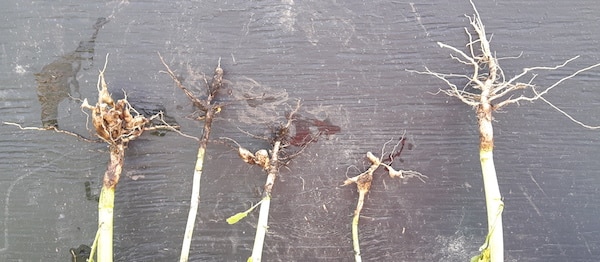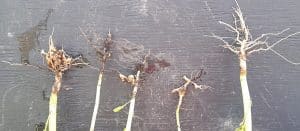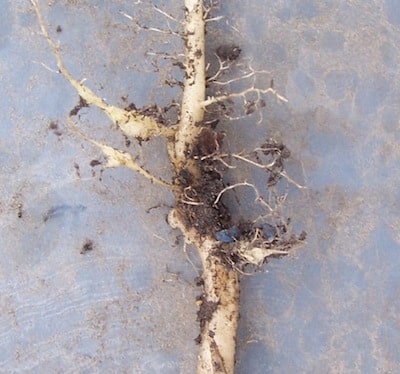Through the pod filling time between flowering and harvest, growers and agronomist may want to take time for a more intense session of clubroot scouting. Galls can start to form about three weeks after emergence, but typically it takes about six to eight weeks for visible galls to form in fields. So galls – if present – will be visible by this stage of the season. How to identify clubroot.
Why scout now?
- If clubroot is found, you have time to take some focused action on these areas. If the patch is small enough, pull up all the plants that have galls, then cut off the galls and dispose of them. Burning is an immediate and effective way to destroy those galls, otherwise put them in a garbage bag for disposal at the landfill. By destroying the galls now, you minimize the amount of inoculum that is released back into the soil for future infestation. Additionally, plan to implement sanitation measures in clubroot positive fields to prevent moving the spores (which will move with soil) to other fields.
- If you find clubroot in a field (including a field seeded to a clubroot-resistant variety), the farm will want to reconsider its crop rotation and variety selections for 2021. If you have questions about this, please contact us. For good general management, always maintain at least a two-year break between canola crops and consider lengthening rotation further to reduce heavy spore loads or comply with clubroot management plans. The Canola Encyclopedia has more on clubroot management. Identifying clubroot presence and pressure now gives you time to visit some crop tours, find varieties best suited to the situation, and book seed before the big post-harvest rush. Keep in mind that even clubroot-resistant varieties are not 100 per cent resisitant and you may see a fraction of the plants develop galls, and these plants would be randomly scattered – NOT in patches.
- Plants in water-saturated areas will be showing signs of stress. With all the moisture, this could simply be stress from excess moisture, but clubroot often takes hold in these low areas, so check for galls as well.
- By scouting now instead of during the pre-harvest rush, you might have more time to collect plants or soil samples and send them in for DNA analysis.


